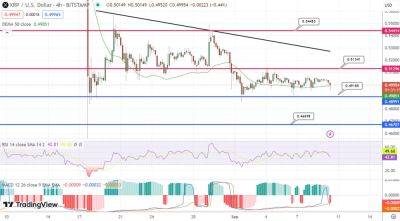Price analysis 9/6: BTC, ETH, BNB, XRP, ADA, DOGE, SOL, TON, DOT, MATIC
Bitcoin (BTC) has been trading between $25,333 and $26,156 since Sep. 1. Typically, a volatility squeeze is followed by an expansion in volatility but it is difficult to predict the direction of the breakout with certainty.
CoinGlass data shows that Bitcoin has fallen for six consecutive years in September. This historic data could keep the bulls at bay in the near term and embolden the bears. Additionally, the United States dollar index (DXY) which has an inverse correlation with Bitcoin has risen sharply in the past few weeks. Both these suggest that Bitcoin could remain under pressure in the short term.
It is not all gloom and doom for the crypto bulls because lower levels are likely to attract buyers. The prospect of one or more Bitcoin spot exchange-traded fund applications receiving approvals may limit the downside. Several analysts believe this event to be hugely bullish for Bitcoin. Any positive news in this regard may prop prices higher.
From a macro perspective, it looks like there may be near-term weakness but lower levels are likely to be purchased. What are the important support levels to watch out for? Let’s study the charts of the top-10 cryptocurrencies to find out.
Bitcoin has been trading below $26,000 for the past two days and the bears are trying to tug the price toward the vital support at $24,800.
The downsloping moving averages indicate advantage to sellers but the developing positive divergence on the relative strength index (RSI) suggests that the bearish momentum could be weakening.
Buyers will have to drive and sustain the price above $26,833 to start a relief rally to the 50-day simple moving average ($28,048). Such a move will suggest that the price may remain stuck inside the large range between
Read more on cointelegraph.com





















